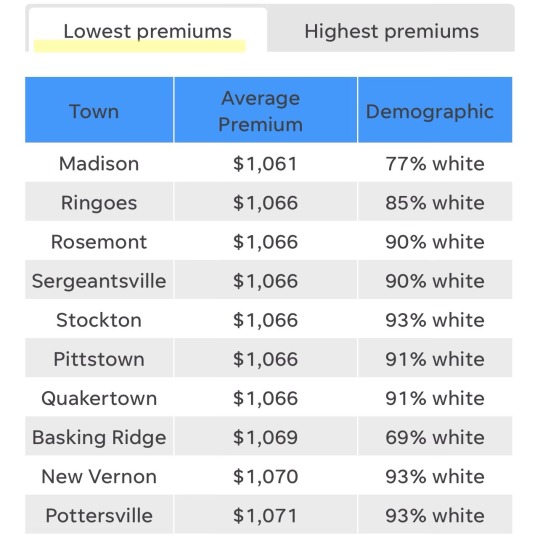#cuqui rivera
Text
By the time Cuqui Rivera had to renew her car insurance policy in December 2019, the longtime activist had only heard about some of the reasons she — a Hispanic female with a high school diploma — may pay more than her white, college-educated neighbors.
So, Rivera decided, "Let me be your guinea pig," she said. "Let's see if this is true."
She looked on the website of Liberty Mutual, the company she had been with for at least two decades, to see if it said anything about factoring education, work history and credit score into insurance rates. She said she found nothing.
Her annual policy with Liberty Mutual cost $2,997, Rivera said. She went to CURE, the West Windsor-based insurance company, and said she found the same policy for $1,188, a 60% savings.
That's because CURE is the only insurance company that doesn't factor in education, employment and credit score when determining a driver's rate, according to the advocacy group New Jersey Citizen Action.
The result of using these "income proxies" in rate-setting is a racial and class disparity that Rivera and other advocates say amounts to widespread discrimination in New Jersey — disparities that the insurance industry does not deny but insists are incidental to societal realities beyond their control.
Advocates have pressed lawmakers, as they have for more than a decade, to change the law so companies can no longer use those factors and others, such as marital status and whether a driver owns a home, to determine insurance rates.
But their mission has been unsuccessful. A bill that would exclude those factors from insurance rate-setting narrowly cleared the Senate but was not posted in the Assembly on the last day of the legislative session last week, meaning it must start the process over again.
That means drivers in mostly Black neighborhoods in cities like Paterson, heavily Latino areas like Camden and low-income towns like Lakewood will likely continue paying higher rates for car insurance than people who live nearby in mostly white, higher-income communities such as Ridgewood, Cherry Hill and Brick.
On average statewide, drivers who live in majority Black and Latino ZIP codes pay nearly 50% higher premiums than those in majority-white ZIP codes, according to the Consumer Federation of America. Drivers in mostly low-income ZIP codes pay nearly 52% higher premiums, on average, than those in high-income areas, the federation said.
"There is a disproportionate penalty levied on African Americans and Latinos," said Douglas Heller, an insurance expert with the consumer federation.
"Every day that is delayed" passing the insurance legislation, he said, "New Jersey residents with perfectly good driving records are paying too much for insurance because policymakers are afraid to stare down insurance companies."
Representatives for insurance lobbying groups in New Jersey did not respond to interview requests, but in testimony on the bill last year they denied discrimination in rate-setting.
Rates vary by race throughout NJ
Rates can vary by hundreds of dollars within one small area. Take a 4-mile stretch of mostly white towns in the Meadowlands, for example.
According to the data, the average annual rate in Carlstadt is $1,822. It's $1,707 next door in Rutherford. And in the next town over, Lyndhurst, it's $1,688.
But racial disparities are clear through New Jersey, according to a USA TODAY Network analysis of the data, which was collected in 2020 by the insurance data company Quadrant Information Services and provided by the federation.
All but one of the top 25 ZIP codes with the lowest average annual insurance premiums — about $1,071 — were mostly white, affluent suburbs concentrated in Hunterdon, Morris and Somerset counties, according to the analysis. The one ZIP code that was majority Black represented a population of 258 people across half a square mile in Bernards Township, a Somerset County town that is 68% white, according to U.S. census data.
The 25 ZIP codes with the highest average premiums — about $2,250 — were in mostly Black, low-income cities in North Jersey, including Elizabeth, Fairview, Irvington, Newark, North Bergen, Passaic and Paterson.
Here are the 10 ZIP codes in New Jersey with the lowest average annual insurance premiums and the 10 zip codes with the highest.


👉🏿 https://www.northjersey.com/story/news/new-jersey/2022/01/14/nj-car-insurance-rates-credit-score-education-race/8895572002/
#liberty mutual#insurance#racism#structural racism#two americas#white privilege#capitalism#new jersey#nj#black tax#price gouging#cuqui rivera
258 notes
·
View notes
Text

My Twitter >>>>>>>>>>> your Twitter
1 note
·
View note